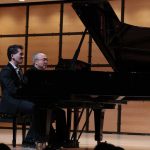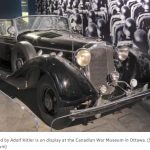照片选自《朝鲜:我们第一次战败》(Korea : The First War We Lost)。作者贝文-亚历山大(Bevin Alexander)朝鲜战争期间为美陆军部派驻前线的战史分遣队队长,后长期为美国陆军及美国政府撰写专题报告,同时兼任某些大报的自由撰稿人。曾长期任教于弗吉尼亚大学。内容简介:本书是第一部由专业的陆军战史学家撰写的著作,全书努力把握历史真实性,全面审视朝鲜战争与中美关系,以及战争带来的后果。
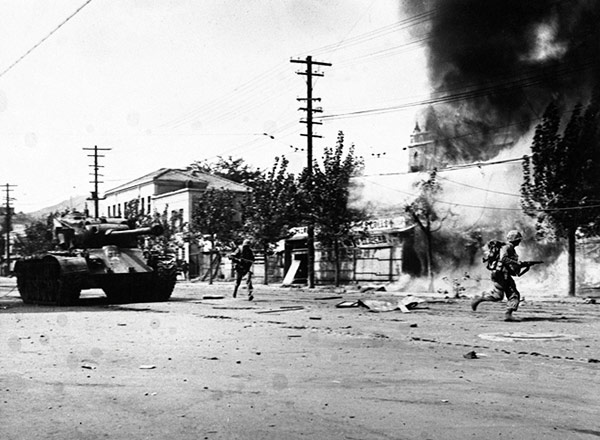
21. Much of Seoul was destroyed in vicious street battles in September, 1950. Here marine infantry lead an M26 tank in the attack. (U.S. Marine Corps photo.)
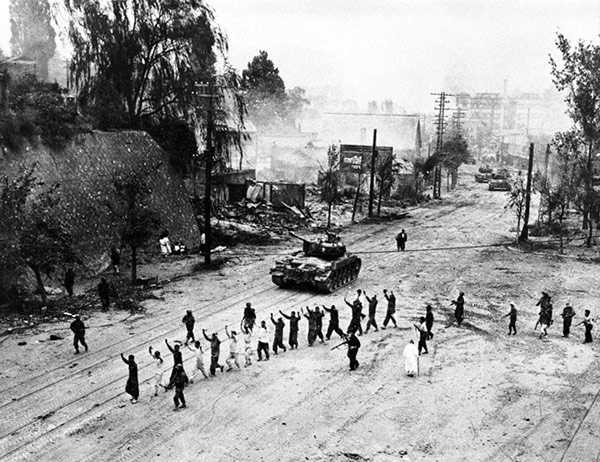
22. A marine tank supports South Korean soldiers guarding North Korean prisoners captured in the assault on Seoul, September, 1950. (U.S. Marine Corps photo.)
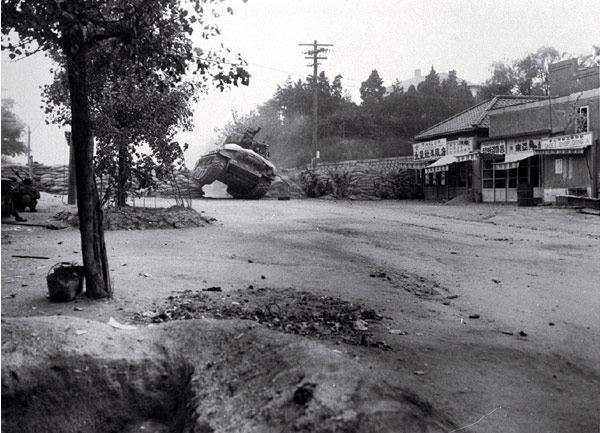
23. U.S. 7th Division infantry wait as an army M4A3 Sherman tank clears a gap in a barricade during the street-by-street North Korean defense of Seoul in September, 1950. (U.S. Army photo.)
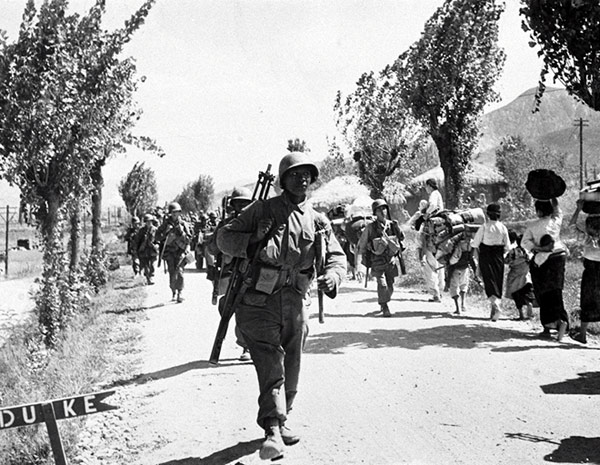
24. Breakout from the Pusan Perimeter: Koreans move back to their homes at Waegwan as U.S. infantrymen advance after the fleeing North Koreans. Soldier in foreground is carrying a Browning Automatic Rifle. (U.S. Army photo.)
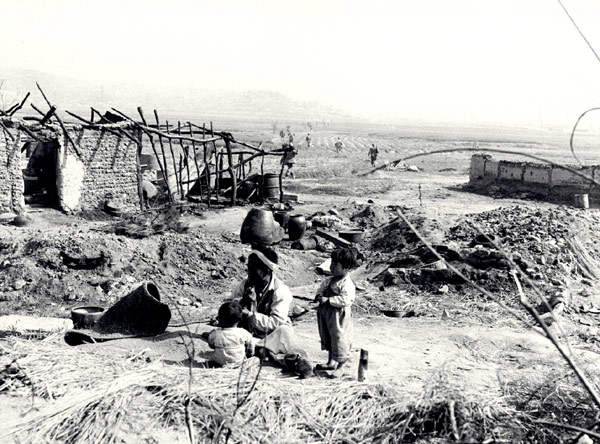
25. The legacy of war: 1st Cavalry Division troops move on north in the fall of 1950, leaving a shattered Korean village behind. (U.S. Army photo.)
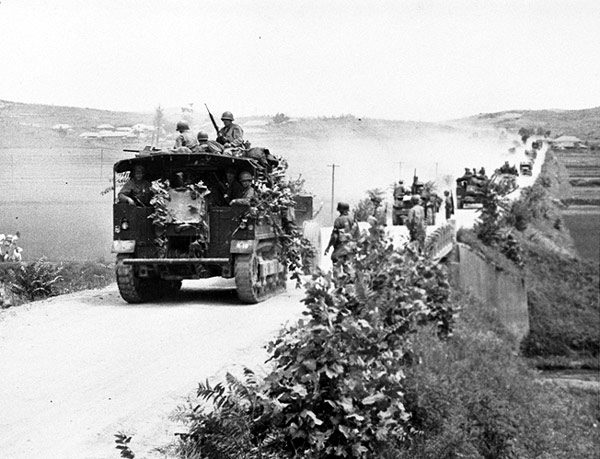
26. When a single vehicle moved on one of the narrow dirt roads that served as practically the only arteries in Korea, it usually raised a column of dust. When convoys such as this passed with artillery prime movers and trucks, the dust cloud could be choking. (U.S. Army photo.)
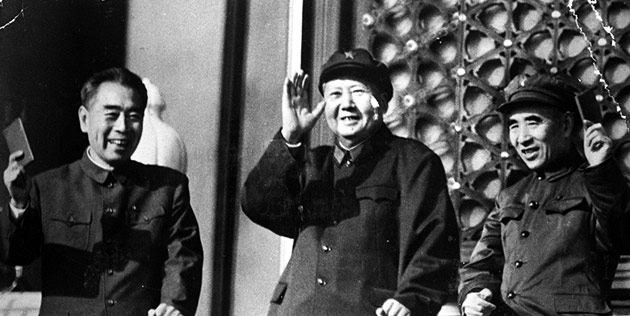
27. Zhou Enlai (left), Communist Chinese premier and foreign minister, stands with Chairman Mao Zedong and Lin Biao (right), one of Red China’s outstanding commanders. (Eastphoto.)
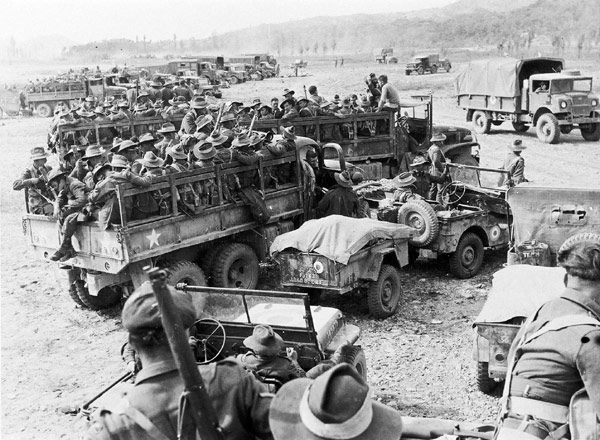
28. This battalion of The Royal Australian Regiment distinguished itself in Korea in a number of engagements. In its first fight the Aussies, using mainly rifles and bayonets, routed a North Koran regiment. (British Commonwealth Occupation Forces Japan photo.)
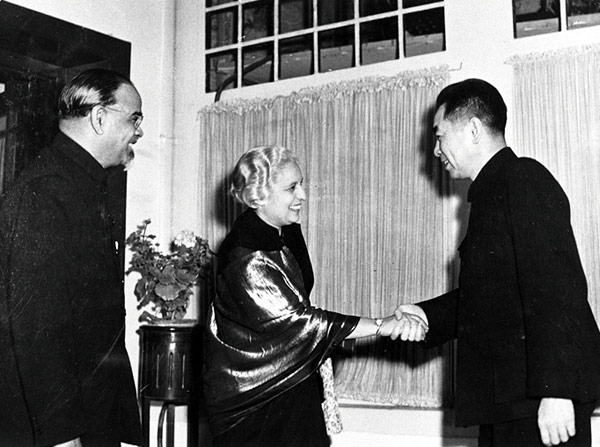
29. Red Chinese Premier Zhou Enlai receives Mme. Vijayalakshmi Pandit, with an Indian cultural delegation, and K.M. Panikkar, Indian ambassador to Beijing. (Eastphoto.)
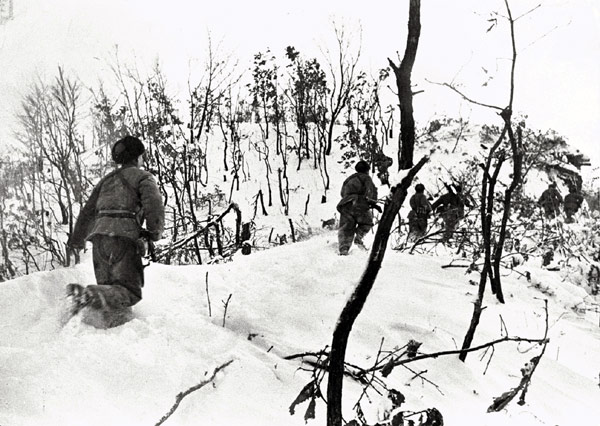
30. Chinese Communist infantry moving to an attack in Korea. (Eastphoto.)
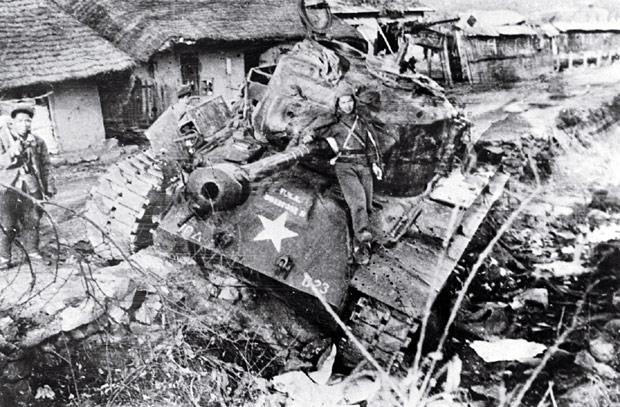
31. A Chinese soldier displays knocked-out U.S. tank of 1st Cavalry Divison in the early months of the Chinese intervention. (Eastphoto.)
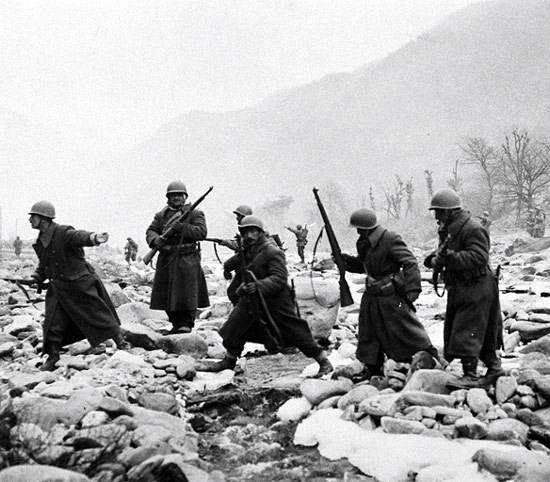
32. Members of the Turkish Brigade move into position in December, 1950, shortly after suffering severe casualties attempting to block encirclement of the U.S. 2nd Division at the Chongchon river in North Korea. (UPI/Bettmann Newsphoto.)
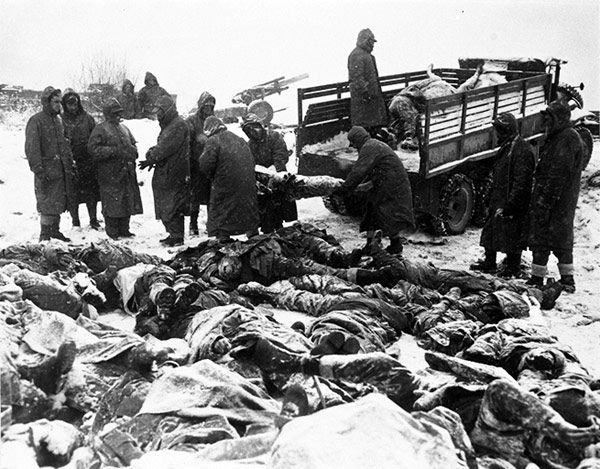
33. Frozen bodies of American marines, British commandos and South Korean soldiers are gathered for group burial at Koto-ri. (U.S. Marine Corps photo.)
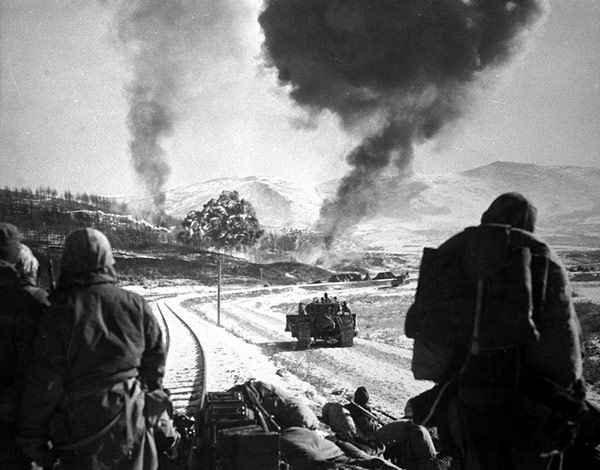
34. Marine Corsairs have just struck Chinese positions in the Changjin (Chosin) reservoir area of northeast Korea with jellied gasoline napalm. Close air support was a key to the successful retreat to the sea in December, 1950. (U.S. Marine Corps photo.)
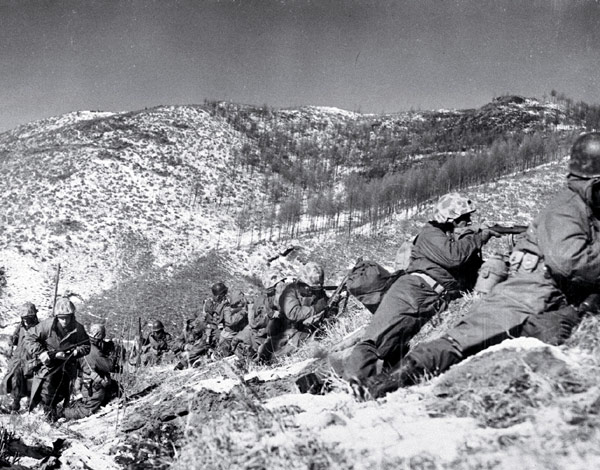
35. Marines take up temporary defensive positions in the retreat from the Changjin (Chosin) reservoir. (U.S. Marine Corps photo.)
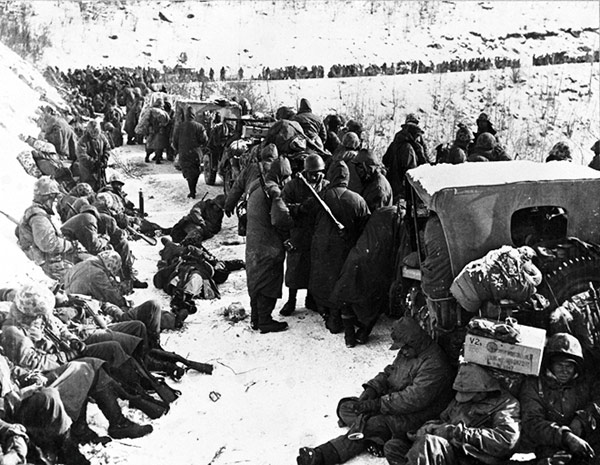
36. Marines in the retreat from the Changjin (Chosin) reservoir halt while leading elements clear a Chinese roadblock. (Defense Department photo.)
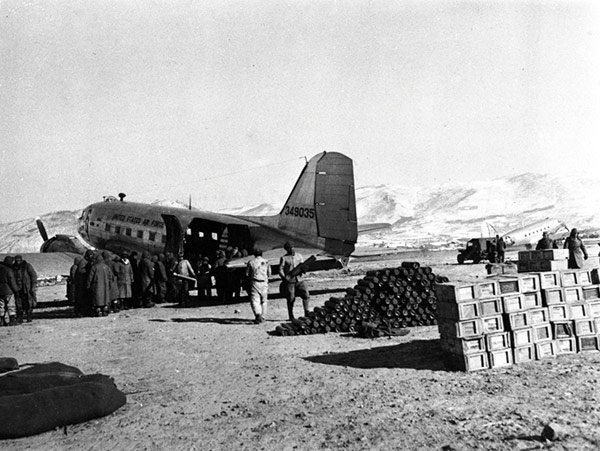
37. This C-47 is being unloaded at the tiny Hagaru-ri airstrip at Changjin (Chosin) reservoir. From here 4,312 wounded and frostbitten men were evacuated by air in the five days before the retreat to the sea began. (U.S. Marine Corps photo.)
38. The marine and army retreat from the Changjin (Chosin) reservoir in December, 1950, occurred in temperatures around zero degrees Fahrenheit. (U.S. Marine Corps photo.)
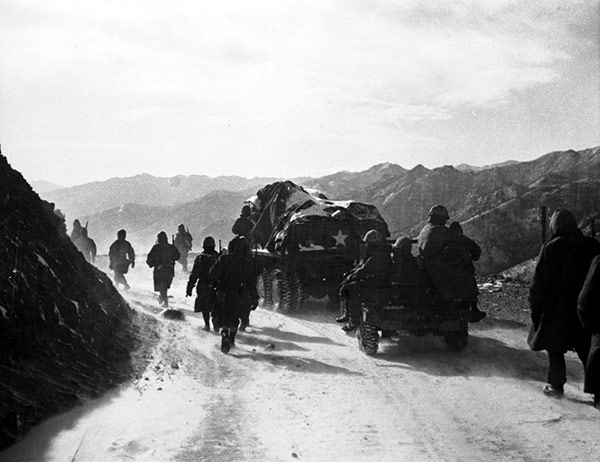
38. The marine and army retreat from the Changjin (Chosin) reservoir in December, 1950, occurred in temperatures around zero degrees Fahrenheit. (U.S. Marine Corps photo.)
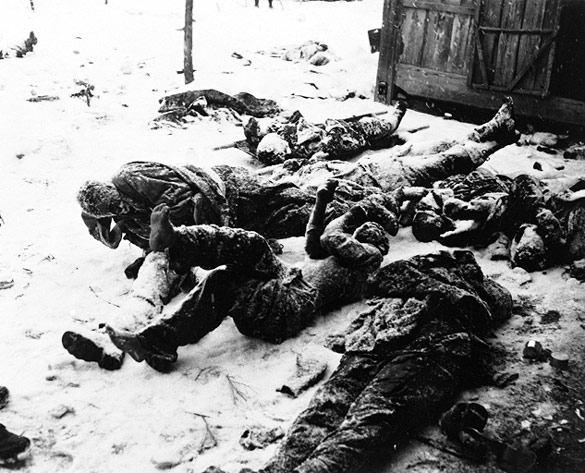
39. Marines reclaimed all their dead on the retreat from Changjin (Chosin) reservoir. Infiltrating Chinese soldiers stripped clothing from some of the bodies. (U.S. Marine Corps photo.)
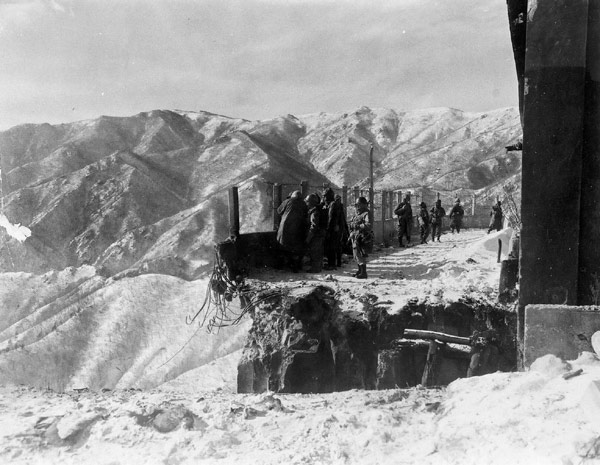
40. This sixteen-foot hole was blown by Chinese soldiers in the single road from Changjin (Chosin) reservoir to the sea. Bridge sections dropped by air permitted this gap to be spanned and men and equipment to get out. (U.S. Marine Corps photo.)


